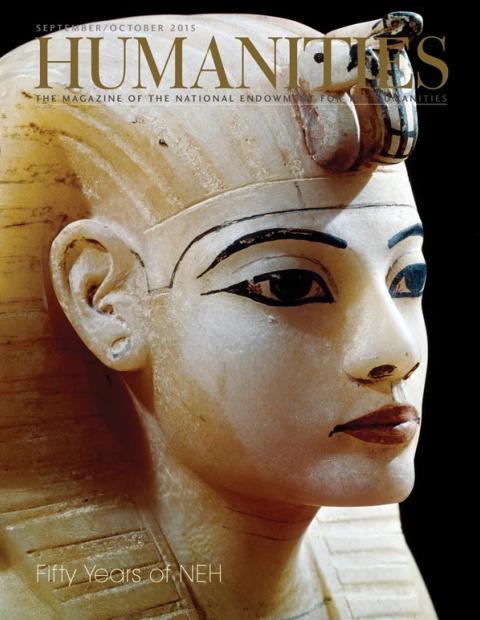Several friezes have been discovered on the walls of the Thomas Cole House in Catskill, New York, the former residence turned museum of the famous nineteenth-century American painter. They had been covered up by a layer of paint about fifty years after Cole’s death, but when in 2014 the museum hired a paint specialist, Matthew Mosca, to analyze the finishes on the walls of the house as part of a restoration effort funded by NEH, he uncovered two small sections of decorative art right below the ceiling in the East and West Parlours. Cole himself had painted them directly onto the wall in 1836. While checking each room of the house, another frieze was found in the pantry, a room that was converted into a storage closet, where there was a Greek key pattern that had never been covered up, but was thought to be just wallpaper.
Now, with the help of a $460,000 NEH grant, the painstaking process of restoring these friezes has begun. In the West Parlour, the frieze follows a regular geometric design, so a representative sample of the design will first be exposed, and then an artist will reconstruct the pattern across the rest of the room. According to Betsy Jacks, executive director of the Thomas Cole National Historic Site, there are several problems with exposing the entire frieze: It’s expensive, the exposed work is more vulnerable to damage, and the now faded and blotchy designs no longer look like they did in Cole’s time.
The situation in the East Parlour is more complicated. Below the Greek key pattern at the top of the frieze, Cole painted non-repeating details, such as folds of drapery, a branch, and flowers. “We don’t know what this is a part of,” Jacks says, adding that they plan to have more exposures done in November to determine how to proceed.
The East and West Parlours are where Cole presented his artwork, which adds an extra layer of meaning to the discovery. “I’m starting to think of the painted friezes as a frame for his art,” says Jacks.

